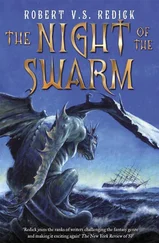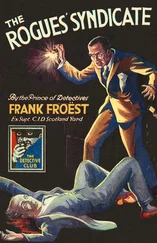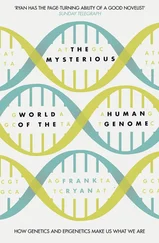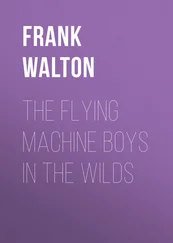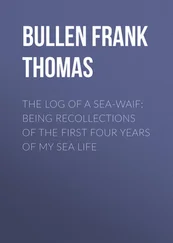The URA's optical sensors were impressive, but its real strength lay in its audio capacity. This was where the inventor had shown a flash of true genius. The robot's acoustic technology allowed it to follow a whale for ten to twelve hours without losing track of it, no matter where it went.
The URA's hydrophones – four sensitive underwater microphones – didn't merely capture the whalesong: they could also determine its source. The hydrophones were fixed at intervals around the robot's case, so that when a whale emitted its high-pitched whistle, they received the sound sequentially. No human ear could register the tiny time delays, the rise and fall in volume: only a computer was capable of that. The noise arrived first at the hydrophone nearest to the whale, then reached the other three in turn.
From there, the computer created a virtual space, assigning coordinates to the source of the sound. Gradually the digital environment filled with positioning data on the whales. The co-ordinates shifted constantly as the animals moved. Now the inside of the computer held a virtual copy of the pod.
Lucy was also emitting sounds as she disappeared into the depths. The computer's memory contained extensive information on specific noises made by whales and different species of fish, as well as the calls of individual animals. The URA searched its electronic catalogue for Lucy but couldn't find her. It automatically created a new entry for the sounds coming from her co-ordinates and compared them to other groups of coordinates, classifying all the surrounding animals as greys and accelerating to two knots to get closer.
Having located and identified the whales, the robot began its optical analysis, which was every bit as thorough as the acoustic diagnosis. Fluke patterns and shapes were stored in its memory, as well as fins, flippers and other identifying features of various whales. This time the computer was in luck. The electronic eye scanned the flukes pounding through the water ahead and identified one of the tails as Lucy's. The URA had been programmed with extensive data on individual whales that had been involved in the attacks. Now it knew which animal was the focus of its attention and changed course by a few degrees.
Whalesong allowed the animals to keep in contact with each other over distances of more than a hundred nautical miles. Sound waves moved through the water five times faster than they did in the air: Lucy could swim as fast as she liked and in any direction, but the robot would never lose her now.
Kiel, Germany
The metal door slid open. Bohrmann's gaze travelled up the imposing walls of the deep-sea simulation chamber. It was a way of taming the ocean, albeit in miniature. Created by man from second-hand experience, the world inside it was an idealised copy of the real thing. People knew less about reality than they did about its substitutes. Children in America drew six-legged chickens because drumsticks came in packs of six, while adults drank milk from a carton, and recoiled at the sight of an udder. Their experience of the world was stunted, but it only fuelled their arrogance. Bohrmann was enthused by the simulator and the possibilities it offered, but imitating life rather than analysing it could make science blind. Understanding the planet was no longer enough for most people; they were intent on trying to change it. In the Disneyland of botched science, human intervention was forever being justified in new and disturbing ways.
He was struck by the same thought whenever he came here: they could never tell for sure what science might achieve, only what it should never have attempted – and no one wanted to hear about that.
Two days after the accident on the Sonne , Bohrmann was in Kiel. The sediment cores and cold-storage tanks had been sent express freight to the care of Erwin Suess. He and his team of geochemists and biologists had lost no time in examining the expedition's haul. By the time Bohrmann had returned to the institute, the tests had begun. For twenty-four hours they'd been working non-stop but now their efforts had been rewarded. The simulator seemed to have revealed the truth about the worms.
Suess was waiting for him at the control panel, with Heiko Sahling and Yvonne Mirbach, a molecular biologist specialising in deep-sea bacteria.
'We've put together a computer simulation,' said Suess, 'not that we need it – it's for everyone else.'
'So this isn't purely a Statoil problem, then,' said Bohrmann.
'No.'
Suess dragged the cursor towards an icon and clicked. A computer graphic appeared on the screen. It was a cross-section of a gas pocket covered with a layer of hydrates a hundred metres thick. Sahling pointed to a thin dark line on the surface. 'This layer represents the worms,' he said.
'We'll zoom in a bit,' said Suess.
The picture changed to show a close-up of the surface and the worms took shape. Suess carried on zooming until a single specimen was in view, a cartoon-like representation, with highlighted sections.
'Those red marks represent sulphur bacteria,' explained Mirbach. 'The blue ones stand for archaea.'
'Endo and ectosymbionts,' muttered Bohrmann. 'One set colonises the inside, the other settles on the skin.'
'Right. It's a consortium. Different species of bacteria working in tandem.'
'The scientists who produced those reports for Johanson had realised that too,' said Suess. 'They wrote page after page on worms and symbiosis. But they drew the wrong conclusions. No one stopped to ask what the consortia were doing. All this time we've been working on the premise that the worms were destabilising the ice, even though we knew it was impossible. Now we know it wasn't them.'
'The worms are just transporters?' said Bohrmann.
'Right.' Suess clicked on another icon. 'Here's how you got your blowout.'
The cartoon worm began to move. The pincer-like jaws sprang open, and it burrowed into the ice.
'Now watch this.'
Bohrmann stared at the picture as Suess zoomed closer. Tiny organisms became visible, boring into the ice. Then, all of a sudden-
'Oh, my God,' said Bohrmann.
No one breathed.
'If the same thing's happening along the length of the slope…' said Sahling.
'Which it is,' said Bohrmann dully. 'It's happening everywhere simultaneously, as far as we can tell. We should have figured this out on the Sonne . The hydrates were dripping with bacterial slime.'
He wasn't surprised by what he had seen. He'd hoped his fears would prove unfounded, but the truth was worse than he'd imagined. Assuming it was true…
'Each individual process is an established phenomenon,' Suess was saying. 'It's the combined effect that's new. When you isolate the details, we've seen it all before. But put it together, and it's obvious why the hydrates would dissociate.' He yawned. It seemed inappropriate to do so after what they'd witnessed, but none of them had slept for more than a day. 'What puzzles me is why the worms are there at all.'
'It beats me too,' said Bohrmann, 'and I've been thinking about it for weeks.'
'So who do we tell?' asked Sahling.
'Hmm.' Suess tapped his lip. 'It's confidential, right – We should tell Johanson first.'
'Why not go straight to Statoil?' said Sahling.
'No,' said Bohrmann, firmly. 'Definitely not.'
'Surely they wouldn't hush it up?'
'Johanson's our best option. From what I can tell, he's not on anyone's side. We should leave it to him to-'
'We don't have time to leave anything to anyone,' Sahling broke in. 'If the situation on the slope is even half as critical as the simulation suggests, the Norwegian government should be informed.'
'But you can't tell the Norwegians without informing all the other North Sea states.'
Читать дальше


